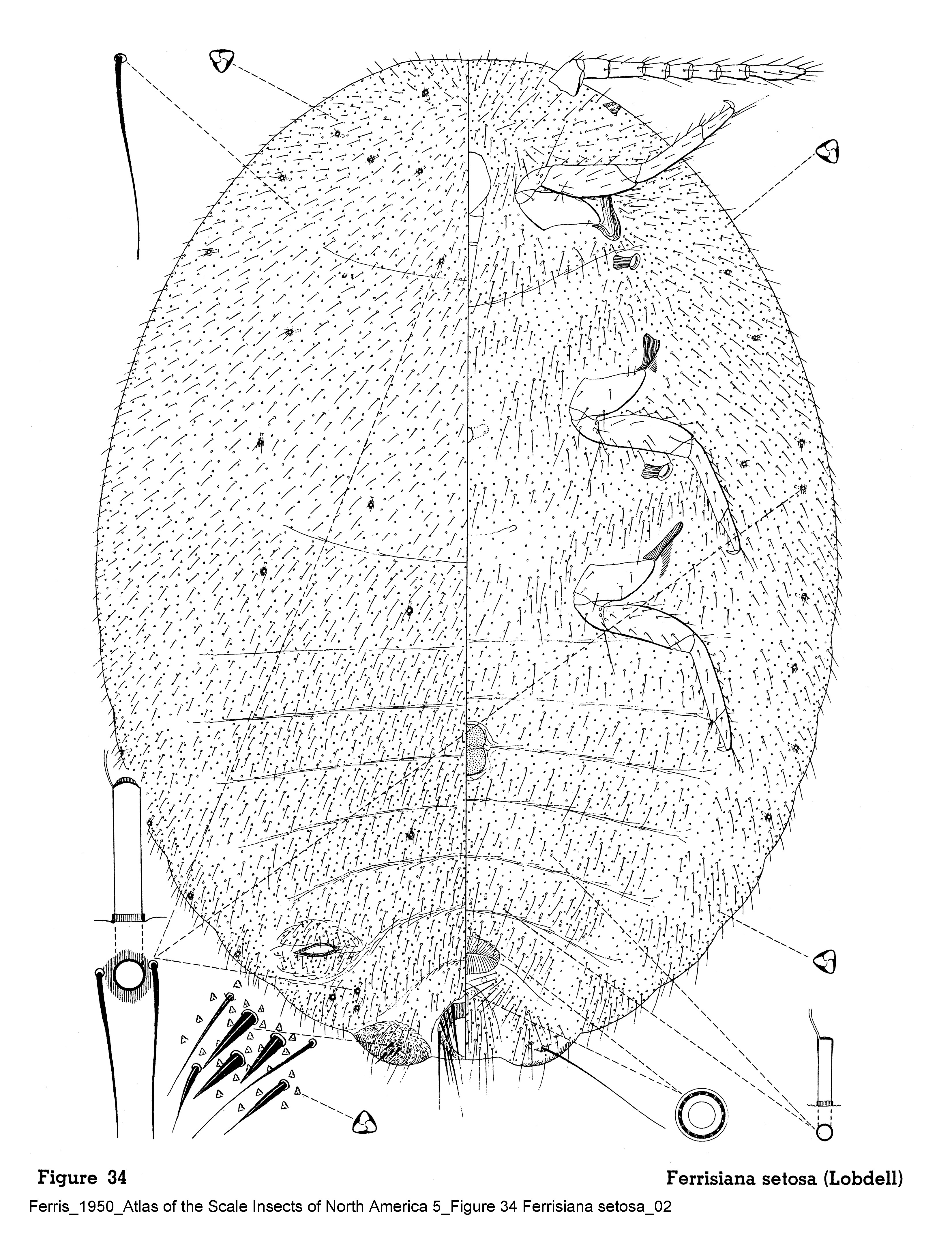Valid Names Results
Ferrisia setosa (Lobdell, 1930) (Pseudococcidae: Ferrisia)Nomenclatural History
- Trionymus setosus Lobdell 1930: 220. Type data: U.S.A.: Mississippi, Durant, on Liquidambar styraciflua. Holotype, female, Type depository: London: The Natural History Museum, England, UK; accepted valid name Illustr.
- Erium setosum (Lobdell, 1930); Lindinger 1935a: 122. change of combination
- Ferrisiana setosa (Lobdell, 1930); Ferris 1950b: 91. change of combination
- Ferrisia setosa (Lobdell, 1930); McKenzie 1967: 179. change of combination
- Ferrisia lobdellae Varshney 1982a: 857. replacement name that is unjustified (discovered by BenDov1994, 164).
Common Names
Ecological Associates
Hosts:
Families: 1 | Genera: 1
- Altingiaceae
- Liquidambar styraciflua | BenDov1994 Lobdel1930
Geographic Distribution
Countries: 1
- United States
- Mississippi | BenDov1994 Lobdel1930
Keys
- TanakaLe2025: pp.297 ( Adult (F) ) [Species of Ferrisia based on adult females]
- KaydanGu2012: pp.11-12 ( Adult (F) ) [Key to species of Ferrisia based on adult females]
- McKenz1967: pp.179 ( Adult (F) ) [U.S.A., California]
- Ferris1953a: pp.360 ( Adult (F) ) [North America]
- Ferris1950b: pp.88 ( Adult (F) ) [North America]
Remarks
- Systematics: This species is most similar to F. claviseta, F. gilli and F. quaintancii as the adult female of all four species lacks the anterior pair of ostioles, and all four species are native to the southeastern U.S.A. However F. setosa is most distinctive in having an anal ring with numerous anal ring setae (12-36, compared with six in all other Ferrisia species). Also each anal lobe cerarius has two to four conical setae, and the openings of the posterior pair of ostioles are lightly sclerotised. There are abundant setae on the abdomen and these are especially noticeable on the venter posterior to the vulva. Multilocular pores are restricted to a few around the vulva and these typically number 1-3 or can be absent. There are about 50 enlarged tubular ducts on the dorsum, mostly marginally around body and usually with one duct on each side of each abdominal segment. There appears to be no recent collections of this species. (Kaydan & Gullan, 2012)
- Biology: Occurring near the roots of its host plant, under shelters built for them by ants.
- General Remarks: Good description and illustration of the adult female given by Ferris (1950b). Varshney (1982) proposed the binomen Ferrisia lobdellae to replace F. setosa (Lobdell), because he regarded the latter homonymous with Dactylopius setosus Hempel. However, D. setosus is now
Illustrations
Citations
- BenDov1994: catalog, 164
- Ferris1950b: description, distribution, host, illustration, taxonomy, 91-92
- KaydanGu2012: description, distribution, host, illustration, structure, taxonomy, 44-46
- Lindin1935a: taxonomy, 122
- Lobdel1930: description, distribution, host, illustration, taxonomy, 220, 221, 235
- McKenz1967: taxonomy, 179
- TanakaLe2025: key, 297
- Varshn1982a: description, distribution, host, taxonomy, 857, 858
- Willia1996DJ: distribution, host, taxonomy, 7



